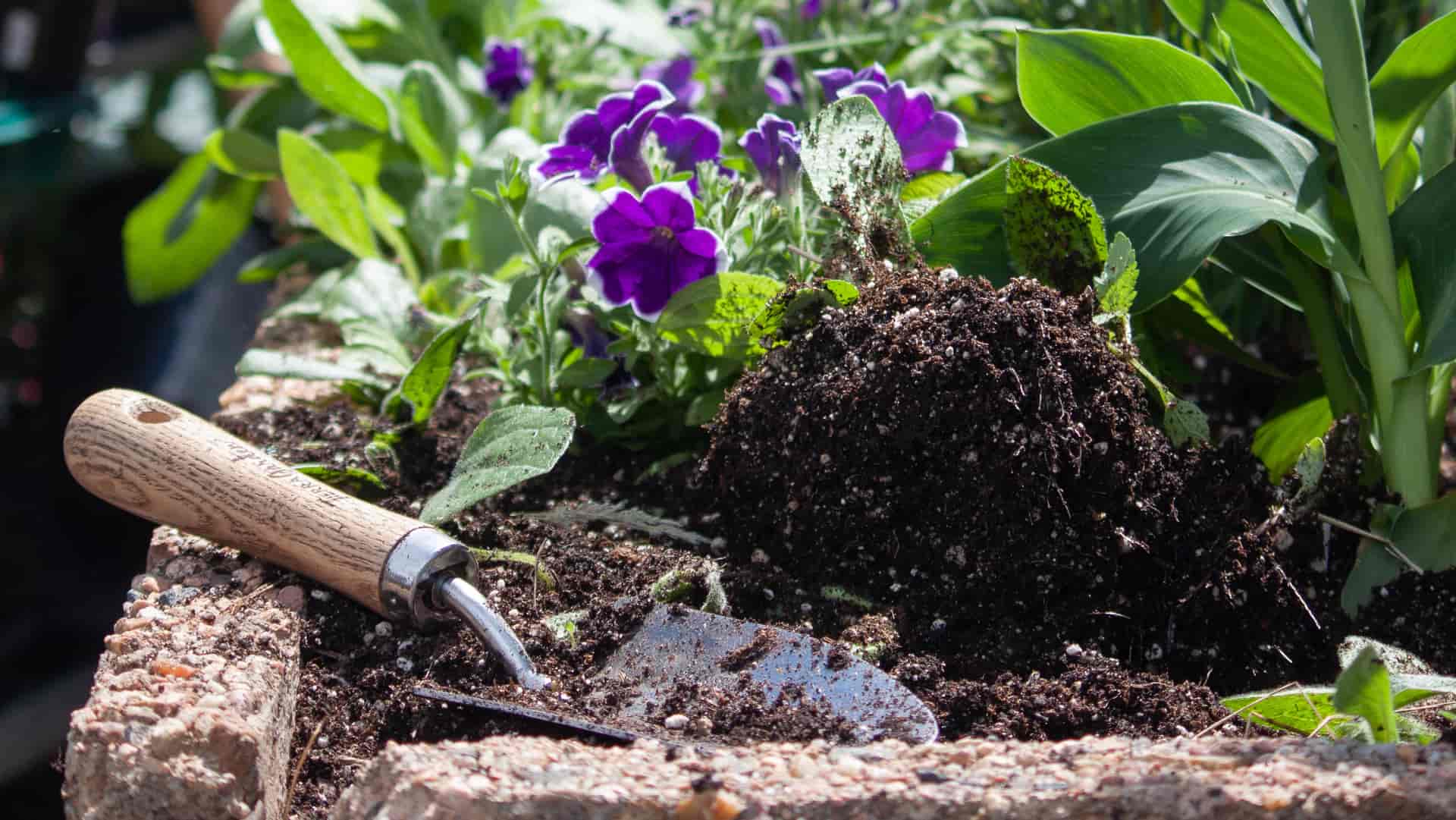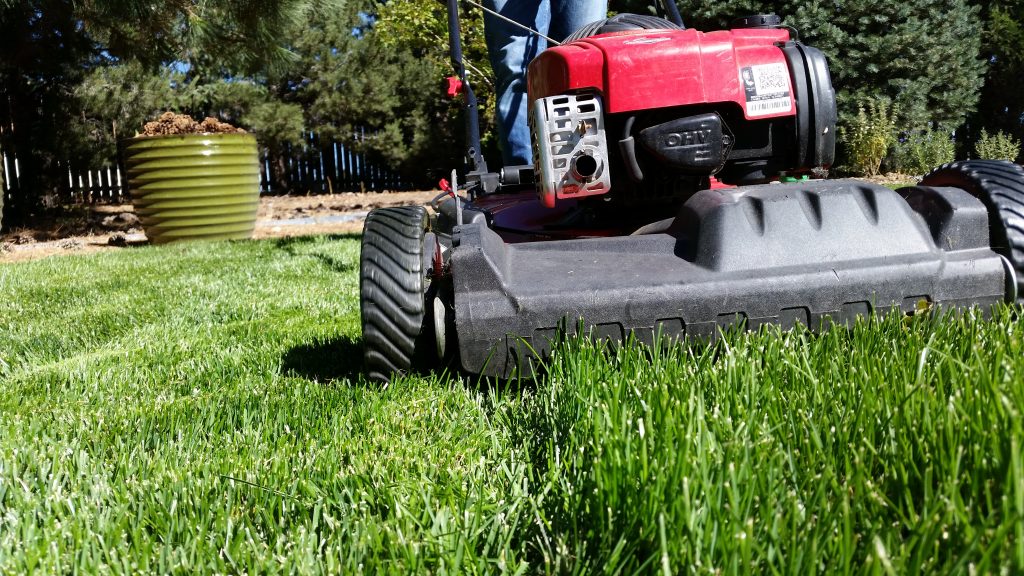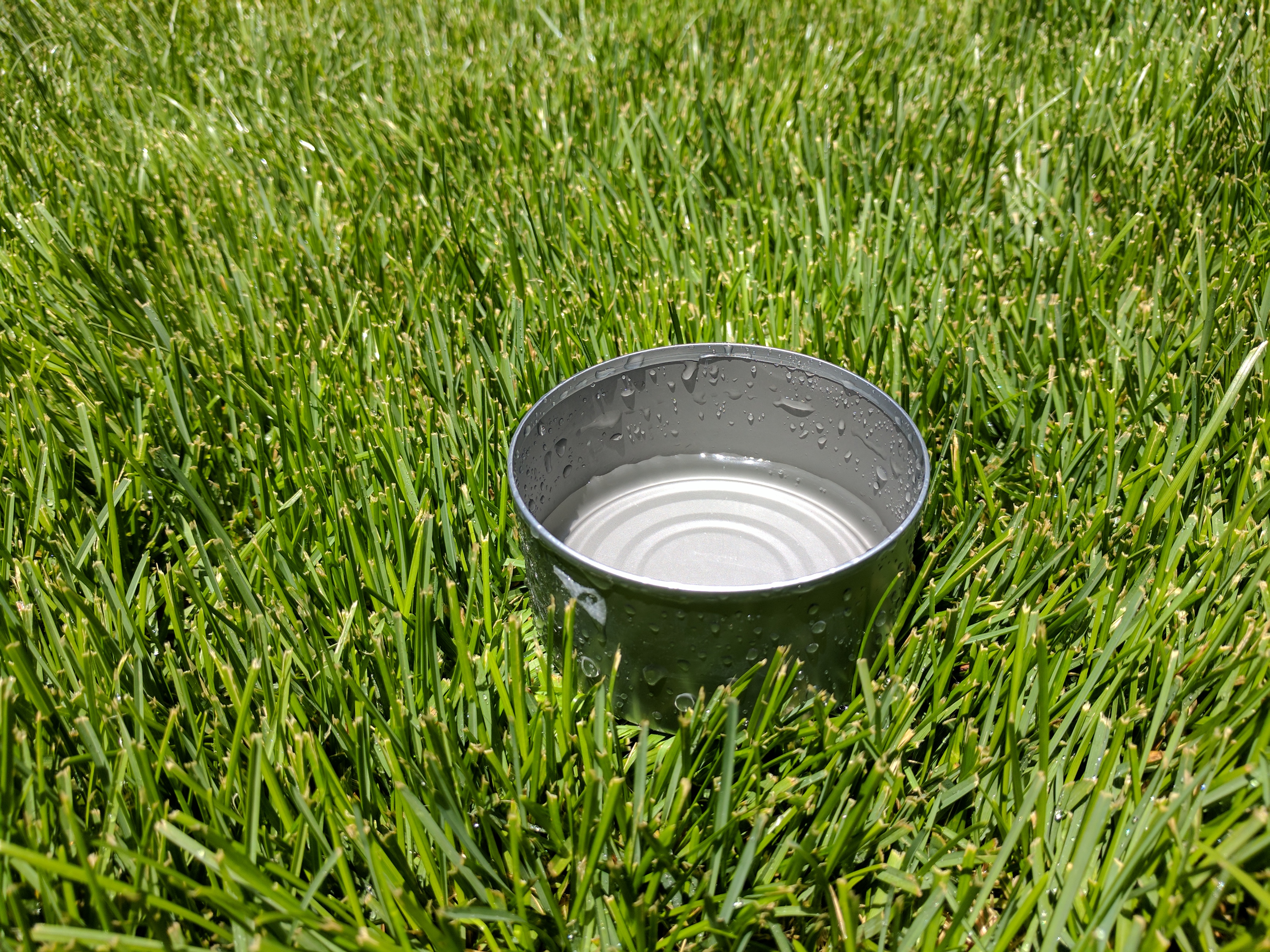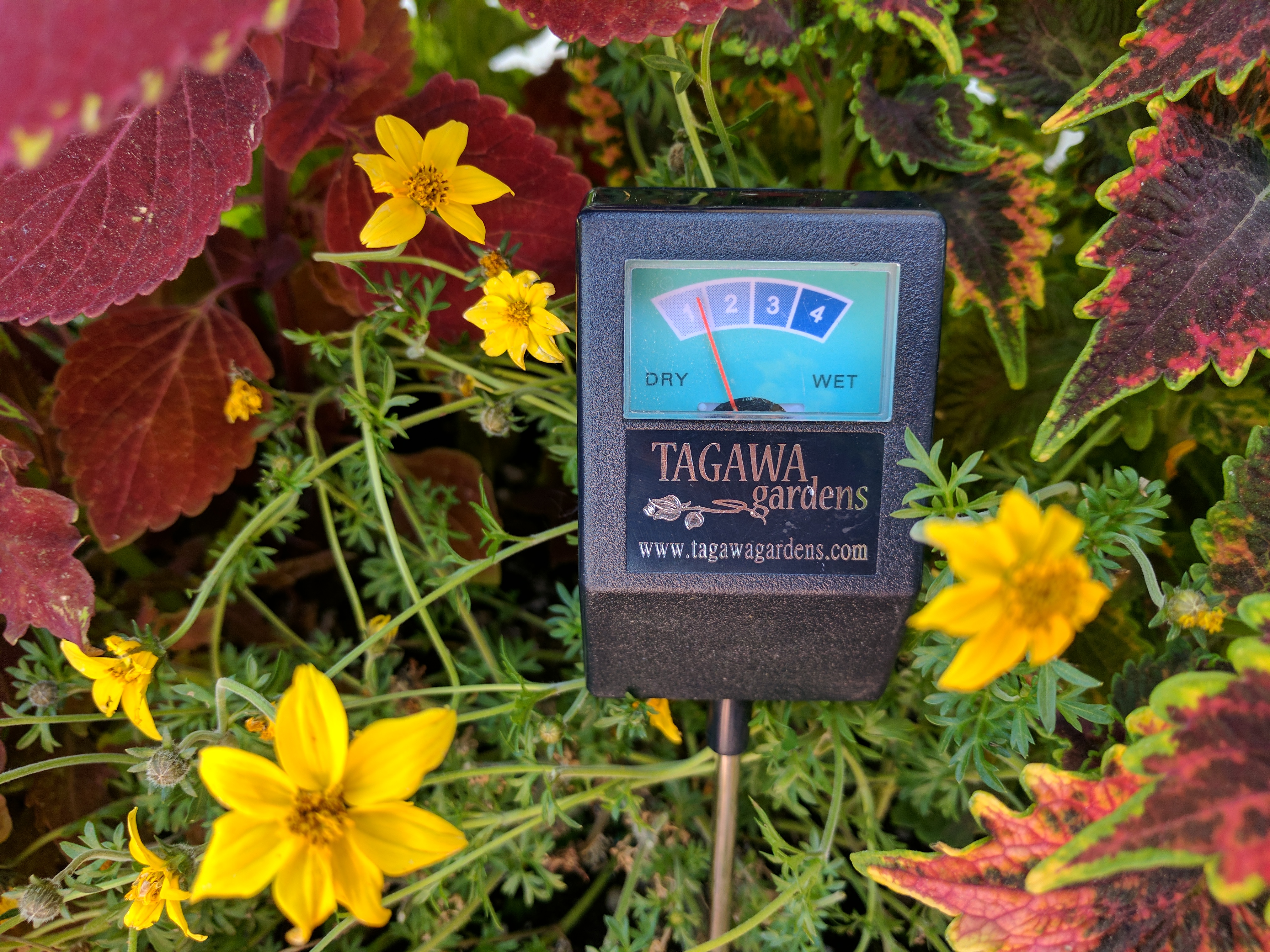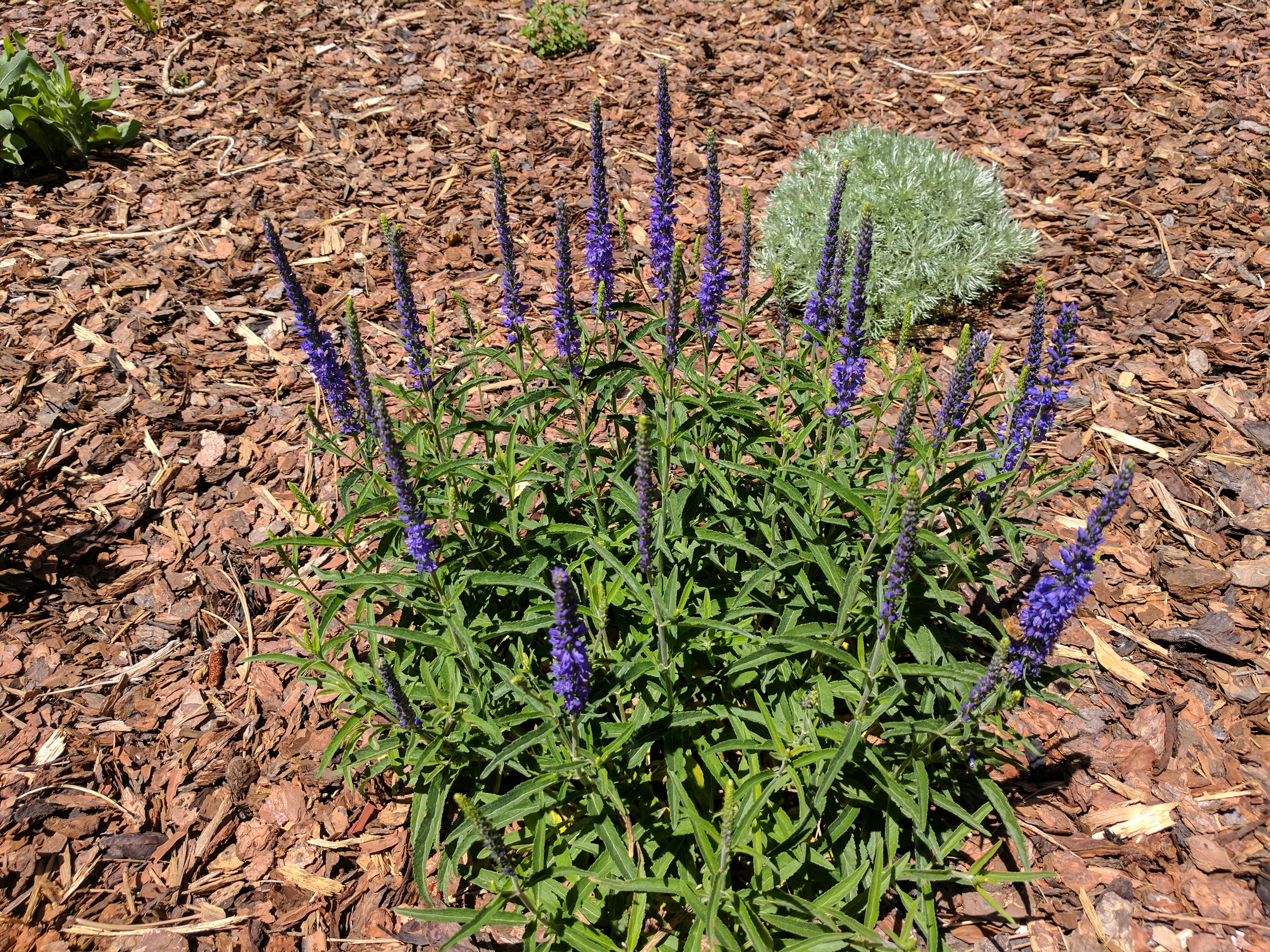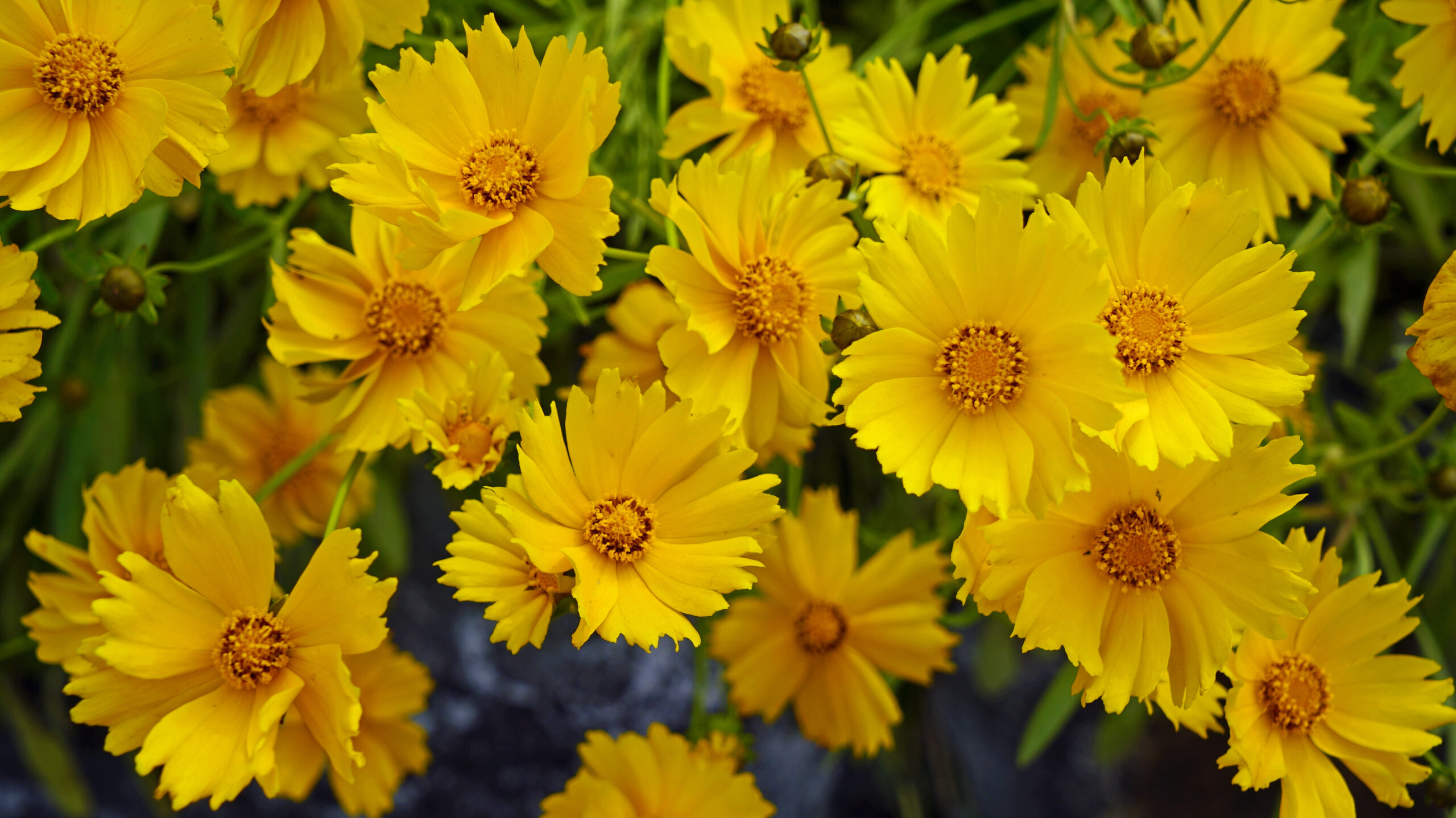As the weather heats up… and stays hot… we need to think about water. Two points in particular. First: the Front Range of Colorado averages about 17″ of moisture a year. We’re not a desert, but we’re not that far from it. Second: 55% of the water we use goes on our lawns and gardens. Fifty-five percent!
Bottom line: we need to make our water count. So now seems like a good time to look at how we can keep our landscapes healthy and make the most efficient use of water at the same time.
A Watering Rule to Live By
Here’s a rule that may not apply to all of the plants we grow in Colorado, but it certainly applies to most of them. Water as deeply but as infrequently as possible to keep a plant healthy. In other words, give a plant enough water to keep it vital, but don’t waste water by giving a plant more than it needs.
Deep watering will encourage a plant’s roots to extend farther into the soil, several inches below the surface. Shallow watering tends to keep the roots closer to the surface, where they’re more likely to dry out in the heat.
As a plant’s roots mature… usually after a couple of growing seasons, you can begin to water less frequently. The plants… and the planet… are better off.
For those new plants you’d like to plant now–be sure to plant in the very early morning or evening hours. Water thoroughly and check every other day or so, depending upon the location, the soil dries out at different rates. A moisture meter is a great tool–see below for more information about this wonderful and inexpensive tool. Remember that even Xeric or drought-tolerant plants need consistent watering for the first few years as they become established.
Lawn watering in the heat of summer
Our lawns use more water than any other part of our landscape. So along with the practice of watering deeply but as infrequently as needed to keep the turf healthy, let’s look at other steps we can take to keep our grass thriving.
Don’t mow your lawn shorter than three inches. The longer blades of grass will help to shade the roots and keep the soil surface from drying out as quickly.
And remember that a properly-fertilized lawn is going to stand up to heat stress better than a lawn that’s starving. If you have questions about when and how to feed your lawn, check with our garden advisers at Dick’s Corner. Keeping your lawn healthy is the best defense against summer stress. Spring and fall lawn aeration (don’t do it now, but put it on your calendar for a reminder) and regular use of Granular Humate (R) help condition your lawn’s soil, which helps keep your grass healthy. If your turf is not looking its best, take pictures on your smart phone and bring them in to help our staff better understand any problems you might be having. You’re also welcome to bring in a bagged sample of turf that’s showing problems. Be sure the sample includes some turf that’s still alive. The folks at Dick’s Corner need to see the condition “in action,” not just the dead results.
Expect them to ask you how much water you’re putting on your lawn. If you don’t know (and most people don’t), do your homework! Set out several small, straight-sided cans (cat food cans or tuna cans work well), and water your lawn as you normally do. Then measure how much water your sprinklers are delivering in a given amount of time.
You can compare that amount to something called the ET rate, the evapotranspiration rate. It measures how much moisture is evaporating from the surface of the soil and transpiring from the leaves of plants, given the recent weather conditions. If you’re not replacing that lost moisture on a regular basis, your lawn is going to suffer. Traditional bluegrass lawns will recover when they are hydrated. Be aware that overwatering can cause disease issues. The use of Revive(R) makes water “wetter” and can enhance water movement to the roots when used with proper irrigation techniques.
The Denver Water Board posts the ET rate over the past seven days on its website at denverwater.org , this link takes you to the Daily Weather Data Report. It will tell you how much moisture plants lost, given the temperature, wind and humidity. The measurements are taken at five airports around Metro Denver.
The ideal time to water is overnight, from 10 p.m. ’til about 6 a.m. Research from C.S.U. indicates that watering at night does not increase issues with lawn diseases.
And remember that the most efficient sprinklers are going to deliver water in a course spray that stays low. Tagawa Gardens has a variety of watering devices that can help you make the best use this precious resource.
Monitoring moisture in pots and containers
Growing flowers and veggies in containers is enormously popular. It makes sense for a lot of people who don’t have the time or space for gardening in the ground. But container gardening can be challenging in 90 degree heat. This is especially true for hanging baskets that are “up there” in the wind and heat.
Start by watering your containers deeply, meaning until you just begin to see water coming out the drainage holes in the bottom of the pot. Wait until the top layer of soil… two or three inches in large pots… begins to dry out a bit and then water again, thoroughly.
You can monitor your container garden’s water needs with a moisture meter from Tagawa’s. Inserting the probe a few inches into your flower or veggie pots will tell you how much moisture is in the soil and whether it’s time to water.
Be on guard for a little trick that the summer heat plays on soil in containers. As the weather heats up day after day, the soil inside the containers can shrink and pull away from the sides of the pots. The water you’re applying so “thoroughly” may simply be draining down the gap between the soil and the pot and missing the roots altogether. It’s a common problem that’s easily overlooked until your plants start hollering for help!
Keep an eye on plants growing in containers on south and west exposures. They’re going to dry out faster, especially if they’re near buildings or fences where they’re getting reflected heat. And assume that small pots are going to dry out much faster than larger pots, even if they’re in the same location.
Mulch matters!
A two- to three-inch layer of mulch can be extremely helpful in conserving moisture in the soil and helping to deter weeds at the same time. Mulching with pea gravel is recommended for drought-tolerant plants that can be sensitive to moisture around the crown of the plant…. where the growth emerges from the ground.
Bark mulch also works well to shade the soil from summer sun. Tagawa Gardens carries a wide variety of bark mulch in varying sizes. The folks at Dick’s Corner will be happy to guide you.
Mulching with straw or pesticide-free grass clippings in your vegetable garden can be especially helpful at keeping the soil moisture consistent between waterings. Many vegetables like squash or lettuce will get bitter if the plants’ roots repeatedly go too dry. The straw or grass mulch can be worked into the soil when the season is over.
Tomatoes will also develop serious problems with inconsistent moisture. Water regularly–a deep soaking is better than a little water every day. If you are growing tomatoes in containers, they you may need to water thoroughly every day or every other day, depending on the type of container. Use a moisture meter as mentioned above if unsure, it is a great tool!
Spend your water budget wisely
“Water wise” shouldn’t be used only to describe drought-tolerant plants. We as gardeners need to be water wise as well. That starts by not taking water for granted, and a lot of that is simple common sense.
By using appropriate plants… “putting the right plant in the right place…” we can have beautiful landscapes and still be respectful of the limited water resources we have in Colorful Colorado!
